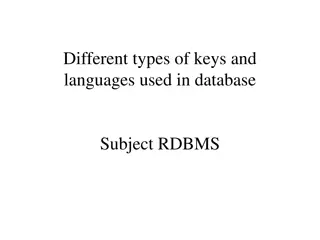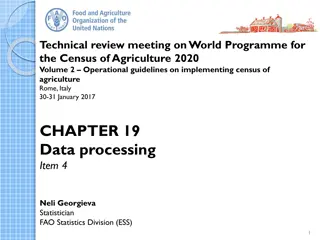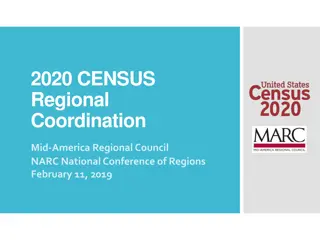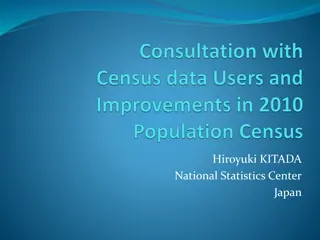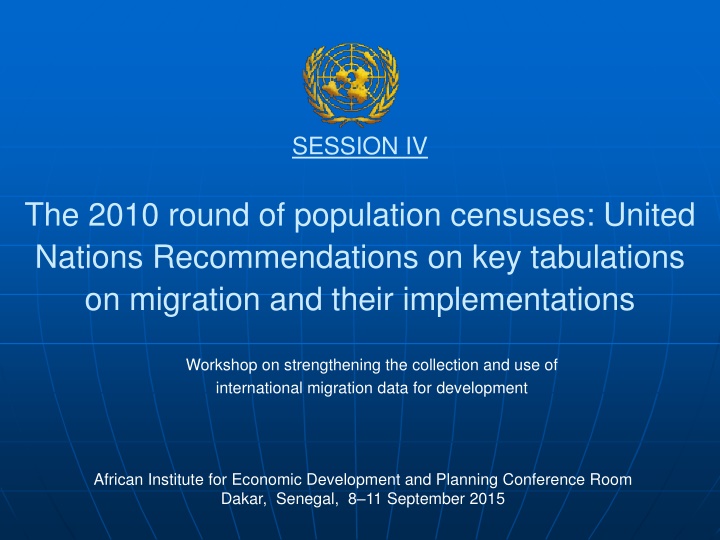
Assessing Characteristics of International Migrants through Census Data
Explore the utilization of census data for assessing the characteristics of international migrants, encompassing socio-demographic factors, housing details, labor market outcomes, and educational attainment. This workshop in Senegal delved into key tabulations recommended by the United Nations, highlighting the significance of data collection for development purposes.
Download Presentation

Please find below an Image/Link to download the presentation.
The content on the website is provided AS IS for your information and personal use only. It may not be sold, licensed, or shared on other websites without obtaining consent from the author. If you encounter any issues during the download, it is possible that the publisher has removed the file from their server.
You are allowed to download the files provided on this website for personal or commercial use, subject to the condition that they are used lawfully. All files are the property of their respective owners.
The content on the website is provided AS IS for your information and personal use only. It may not be sold, licensed, or shared on other websites without obtaining consent from the author.
E N D
Presentation Transcript
SESSION IV The 2010 round of population censuses: United Nations Recommendations on key tabulations on migration and their implementations Workshop on strengthening the collection and use of international migration data for development African Institute for Economic Development and Planning Conference Room Dakar, Senegal, 8 11 September 2015
Using census to assess characteristics of international migrants Basic socio-demographic characteristics: Age, sex Defining characteristics: duration of stay, country of origin (country of birth or citizenship) Housing characteristics: Size and composition of households Labour market outcomes: Labour force participation status, employment, unemployment; status in employment; occupation Adult s cognitive skills: literacy skills; educational attainment
Using census to assess characteristics of international migrants (2) Tabulations could apply to Stock of foreigners Stock of foreign-borns Compare Foreigners with citizens Foreign-born with native-born population
Some examples (1) Source: Settling in 2015 (OECD)
Some examples (2) Source: Settling in 2015 (OECD)
Examples (3) Source: Settling in 2015 (OECD)
Examples (4) Source: Settling in 2015 (OECD)
UN Demographic Yearbook tabulations Data collected by country of birth: Population by country of birth (foreign-born or native-born), age and sex Foreign-born population by country of birth, age and sex Foreign-born population by educational attainment, age and sex Economically active foreign-born population by occupation, age and sex Data collected by country of citizenship: Population by citizenship status (citizen & foreigner), age and sex Foreign population by country of citizenship, age and sex Foreign population by educational attainment, age and sex
Availability of data Asked questions on Asked questions on Data available on Data by Data by country of country of birth birth Data by Data by citizenship citizenship Country Country Algeria, 2008 Benin, 2013 Burkina Faso, 2006 C te d'Ivoire, 2014 Libyan Arab Jamahiriya, 2006 Mali, 2009 Mauritania, 2013 Morocco, 2014 Niger, 2012 Senegal, 2013 Togo, 2010 Country of birth Country of birth Citizenship 2008 2013 2006 Citizenship 2008 2013 2006 2006 2006 2009 2009 2009 2014 No 2010 2010
A few issues in the data A long lag in receiving the tabulation on international migration (the priority issue) Data on country of birth/citizenship only available for a list of countries and most countries are grouped in regions This may be an issue at data collection stage Data on educational attainment and occupation mostly not available



